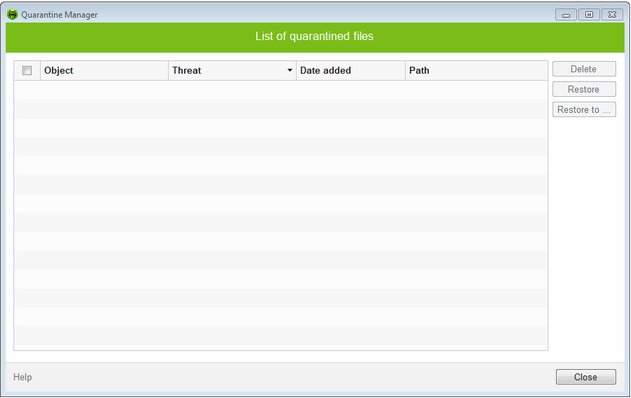The Quarantine component of Dr.Web serves for isolation of files that are suspected to be malicious. Quarantine also stores backup copies of files processed by Dr.Web.
Folders of Quarantine are created separately on each logical drive where suspicious files are found. The Quarantine folder is created on portable data carriers only when they are accessible for writing. Infected objects are moved to appropriate folders and then the quarantined files located on hard drives are encrypted. The use of separate folders and omission of encryption on portable data carriers prevents possible data loss.
To open this window, click the SpIDer Agent icon ![]() in the notification area, select Tools, and then select Quarantine Manager.
in the notification area, select Tools, and then select Quarantine Manager.

For details on a certain option, click the corresponding item in the picture.
The central table lists the following information on quarantined objects that are available to you:
•Object – name of the quarantined object
•Threat – malware class of the object, which is assigned by Dr.Web when the object is quarantined
•Date added – the date and time when the object was moved to Quarantine
•Path – full path to the object before it was quarantined
|
Quarantine displays objects which can be accessed by your user account. To view hidden objects, you need to have administrator privileges. |
In the Quarantine Manager window, the following buttons are available:
•Restore – remove file from the quarantine and restore it to the original location (with the same name to the folder where the object had resided before it was moved to the quarantine);
•Restore to – remove file to the selected folder and specify a new file name.
|
Use this option only when you are sure that the selected objects are not harmful. |
•Delete – delete file from the quarantine and from the system.
To apply an action to several files simultaneously, select the check boxes next to the object names and then click the corresponding button.